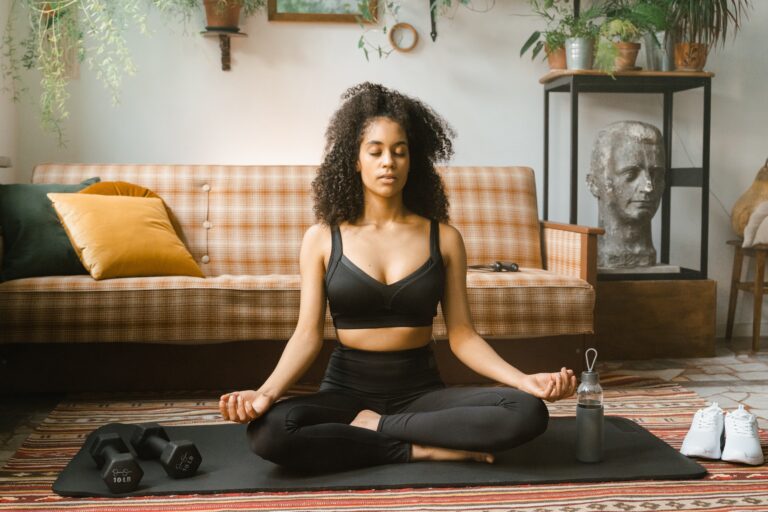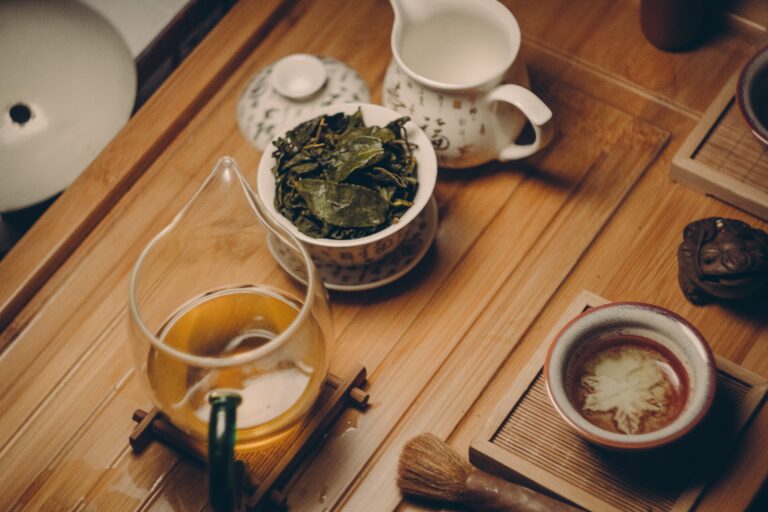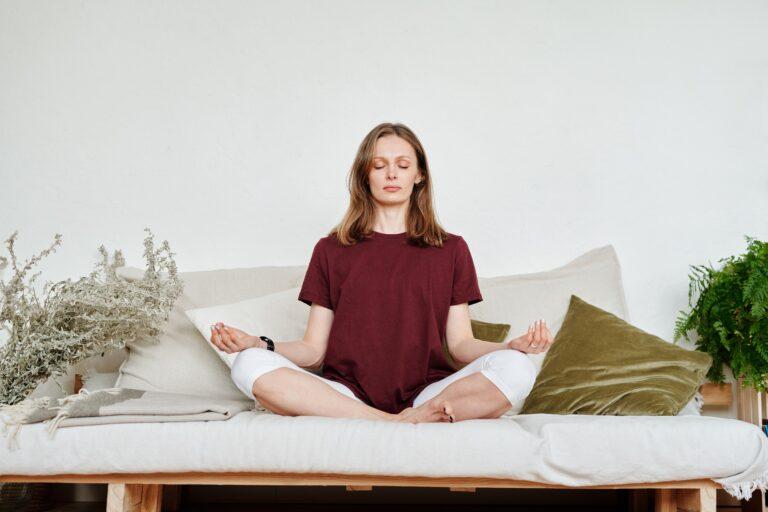6 Breathing Exercises You Must Try, To Fight Against Stress
Did you know that simple breathing exercises can contribute to improving the quality of your life on multiple levels? Breathing is not just a basic physiological function; it’s also a powerful tool for enhancing your health. In this article, we’ll explore the significance of breathing exercises, and their history, and introduce you to some of the most effective practices you must try for a better life.
Observing a baby, you’ll notice that they primarily breathe with the diaphragm, meaning their belly moves in and out during breathing. As adults, we are more prone to stress and bad habits, leading to shallow breathing or solely using the chest. Therefore, experts would suggest learning to breathe like babies – with the diaphragm. Why? Because it enables more efficient gas exchange in the lungs and promotes muscle relaxation, fostering relaxation and stress reduction.

“Whenever your mind becomes scattered, use your breath as the means to take hold of your mind again.”
Thich Nhat Hanh
Breathing exercises work anti-stress and more than that
Have you ever wondered how your nerves function when you’re stressed or feeling calm? Well, here’s the thing: we have two systems that work automatically and influence our body and mind.
The first, called the sympathetic system, prepares us for action. When we feel stressed or in danger, this system kicks in, ready for fight or flight. The second system, called the parasympathetic system, acts as a brake, calming us down and promoting rest and regeneration.
Ideally, both systems are in balance, but modern lifestyles mostly irritate the sympathetic system. This means we’re constantly under stress, which can lead to fatigue and even health issues. Therefore, it’s important to find ways to calm down, relax, and activate the parasympathetic system.
One way to do this is through breathing exercises. Yes, you read that right. Breathing exercises can be your weapon against stress and constant strain. When we focus on our breathing, we can activate the parasympathetic system, calming us down and aiding relaxation.
Why is this so important? Too much stress can lead to excessive release of stress hormones, such as cortisol, which can harm our health. With breathing exercises, we can balance bodily processes, reduce stress, and feel better.
So, the next time you feel stressed or overwhelmed, take a moment and do some deep breaths. Your body will thank you, and your mind will be calmer and more focused. Breathing exercises are truly your path to relaxation and better health.
Why are breathing exercises good for us?
- Deep breathing triggers the release of endorphins, which help reduce stress and anxiety levels in the body.
- Proper breathing techniques can increase focus and mental clarity, improving cognitive functions.
- Breathing exercises can help balance emotions, reduce depression, and increase a sense of inner peace and satisfaction.
- Proper breathing can improve oxygen flow in the body, increasing energy and overall vitality.
- Regular practice of breathing exercises can strengthen the immune system and contribute to better overall health.
- Research has shown that it reduces anxiety and negative changes in the brain.
- Organs are cleansed.
- Cleanses 80,000 nerves in the body.
- Lowers blood pressure, which helps with high blood pressure issues.
- They say it prolongs life.
- Increases energy levels, and clears blocked chakras.
- Good body health strengthens the lungs, and improves sleep.
- Alkalizes the blood and reduces inflammation.
- Promotes good mood and joy.
- Gives the skin a natural glow.
- Positively affects memory.
The history of breathing exercises, or otherwise pranayama
Breathing exercises, also known as pranayama in yogic tradition, are ancient techniques based on breath control to improve physical, emotional, and spiritual health. The word “pranayama” comes from the Sanskrit words “Prana,” meaning life force, and “ayama,” meaning control or expansion. Pranayama thus focuses on controlling the life force through breath.
These techniques were developed thousands of years ago in ancient India as part of yogic practice. Some sources suggest they date back 6000 years. Pranayama has evolved over centuries, passed down from generation to generation, and spread to many other cultures and traditions around the world.
Yogis extensively studied and researched the breathing of animals, finding that pythons, elephants, and turtles breathe slowly, and these animals also have long lifespans. Meanwhile, fast-breathing animals like birds, dogs, and rabbits have shorter lifespans. So? We want to live longer, right? What we can do is consciously pause, especially when under stress, and calm our shallow breathing.
The Best Breathing Exercises
Breathing is like a door to immediate meditation. There are several Pranayama techniques, all of which have a similar preparation, namely relaxation of the body and installation in a comfortable position (Sukhasana). Warning on my part, if you happen to have heart health problems or are pregnant, you better seek professional advice, even if you feel discomfort you better stop. The ideal time is early in the morning and on an empty stomach. I will introduce you to a couple of Pranayama techniques
1. NADI SHODHANA
Shodana means cleansing the energy channel, helping to coordinate the entire system. It also reduces heart rate stress and anxiety. Let’s start with the steps to perform a breathing exercise:
- Step 1 Proper posture, this step will be repeated with other techniques, the best position is Sukhasana. (relax your thoughts)
- Step 2 Close your eyes, then close your left nostril with your index finger, repeat the inhale and exhale at least 5 times, and repeat the same procedure for the right nostril.
- Step 3 Then breathe with both nostrils also 5x
- The number of repetitions is at least 5-10x
2. RHYTHMIC BREATHING
In this exercise, the length of the inhale and exhale must be the same.
- Step 1 Proper posture and calm the body (soothe the thoughts)
- Step 2 Close your eyes and relax them until you become aware of breathing.
- Step 3 Observe the inhale and exhale
- Step 4 So you can start counting the seconds of inhaling and then exhaling, try to coordinate the same time.
- Continue for at least 5 minutes.
3. UJJAYI EXERCISE
We have come to the most famous technique of Pranayama or otherwise, it has several names: “ocean breath”, “snake breath”, “whispering breath”, and “winning breath”. Potential benefits are that it calms the entire nervous system and mind, removes toxins, improves concentration, releases body tension, and regulates body heating and cooling. The technique is used in the Asana exercise.
- Step 1 Proper posture and relaxation of the body (keep your mouth closed, breathe through your nose), soothe your thoughts.
- Step 2 Be aware of your throat, imagine how your inhale goes through your throat and how it comes back when you exhale.
- Step 3 Gently squeeze the glottis (voice folds) to create a snoring-like sound between inhaling and exhaling.
- Step 4 How will you know you are exercising properly ?: Spontaneous abdominal contraction occurs
- Repeat for up to 5 minutes
4. BHRAMARI’S BREATHING EXERCISE (BEE BREATH)
The Indian word Bhamari its meaning is the bee. Exercise is effective for immediately calming the body, freeing you from anxiety, negative feelings, agitation, and anger. You can use the technique anywhere on the road, at work, or simply at home without any special preparations.
- Step 1 Sit in a comfortable position, relax your body
- Step 2 Relax your jaw with your mouth closed, be aware of breathing, you will hear sound vibrations
- Step 3 Place both pointers on the cartilage and gently press the cartilage that is in the area between the face and ear, so that you “close” or. prevent the flow of external sound into the ear.
- Step 4 Focus your awareness on the area between the eyebrows.
- Step 5 Inhale through the nose and during exhalation create a buzzing sound throughout the front of the skull
- Practice 5 -10 repetitions.
5. BHASTRIKA
It is also called the Yogic Breath of Fire. When performing this exercise, a stable posture is important so that you can easily move your abdomen. It allows the rapid exchange of oxygen and carbon dioxide in the bloodstream. It removes toxins from the body, and has a positive effect on the digestive system and also on the nervous system. Increases lung capacity, and helps with sinus problems, and bronchitis. Balance the dosha.
- Step 1 Comfortable position where you will be straightened, ideal positions are vajrasani or sukhasani.
- Step 2 Relax your body and close your eyes
- Step 3 Take a deep breath through your nose. Inhale and exhale should have the same power.
- Step 4 inhale and exhale strongly several times using the diaphragmatic muscles. During the inhale, the diaphragm lowers, and the abdomen tenses out, then exhales just the opposite, the diaphragm rises and the abdomen inwards.
- This exercise will be accompanied by a strong nasal sound, perform the procedure rhythmically and maintain speed according to performance.
- Repeat 10 cycles.
6. KAPALBHATI
The word consists of two meanings, Kapal– skull (also includes its organs) and Bhati– shining, enlightened. The exercise process affects the brain, internal cleansing, and cleanses the respiratory system. It is similar to the Bhastriki exercise only in that it is slower and longer. The exercise uses forced exhalation.
- Step 1 You are probably already familiar, a comfortable position is the best pose as I mentioned at Bhastrika as you will have room for your stomach, relax your body and calm your thoughts.
- Step 2 Close your eyes.
- Step 3 Inhale spontaneously and automatically, without straining, and exhale with a strong contraction of the abdominal muscles.
- Repeat at least 10 cycles.
“The quality of your life is measured by the number of deep breaths you take. Make each breath count.”
Richie Norton
Which technique will you try first?










A great post without any doubt.
Thank you very much.
Excellent beat ! I wish to apprentice while you amend your site, how can i subscribe for a weblog site?